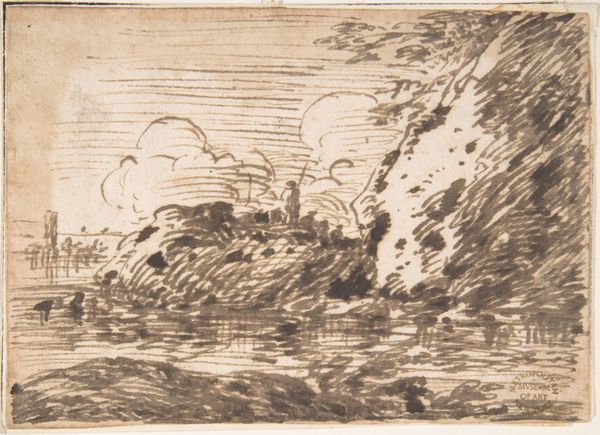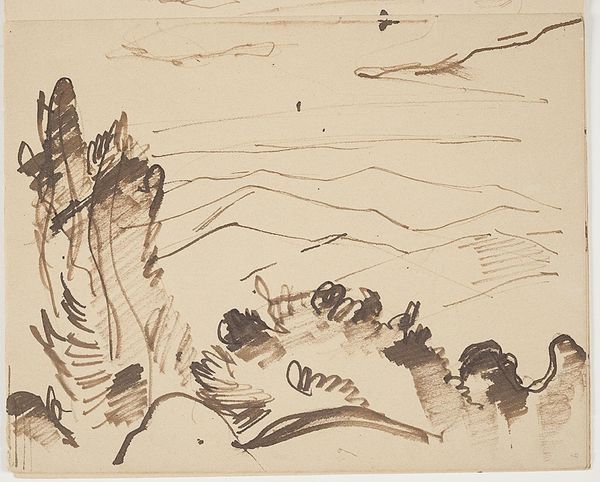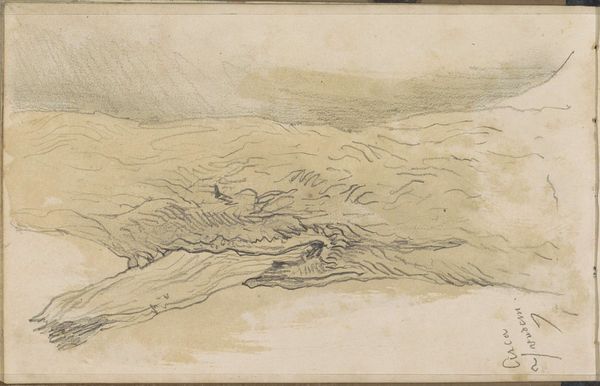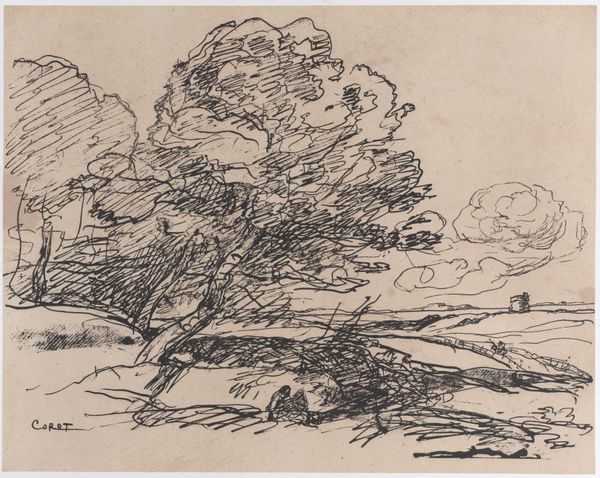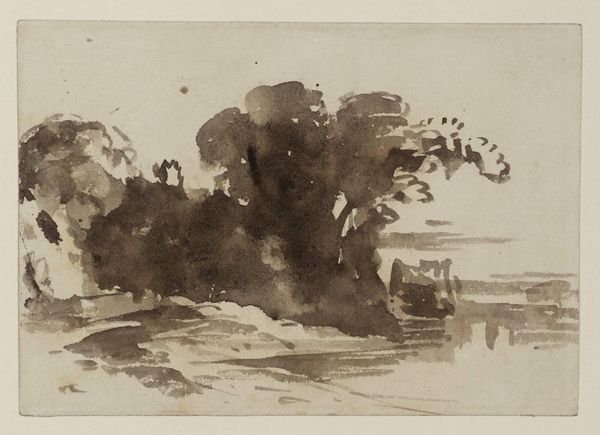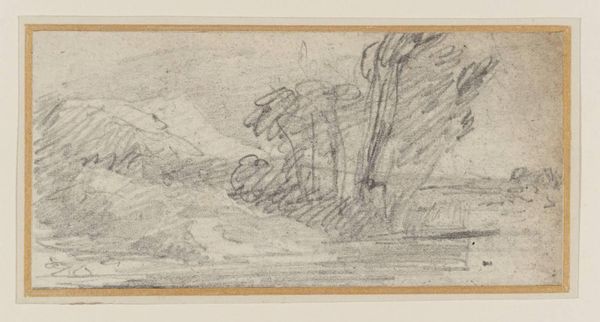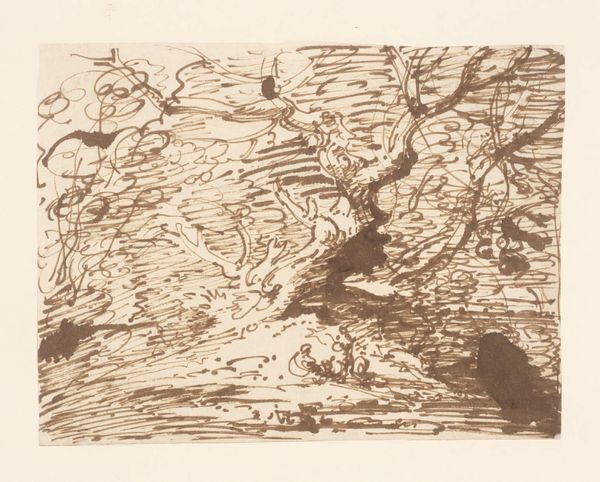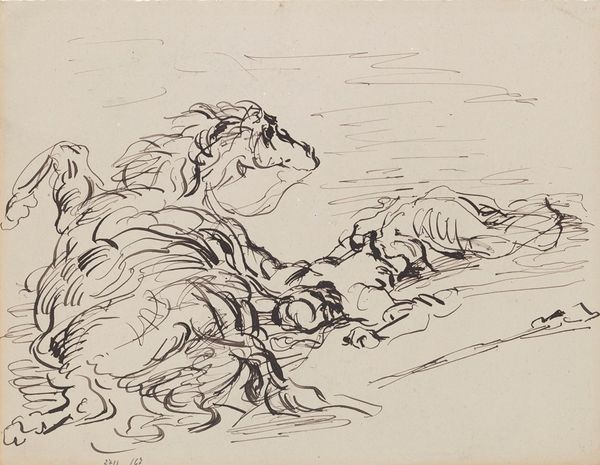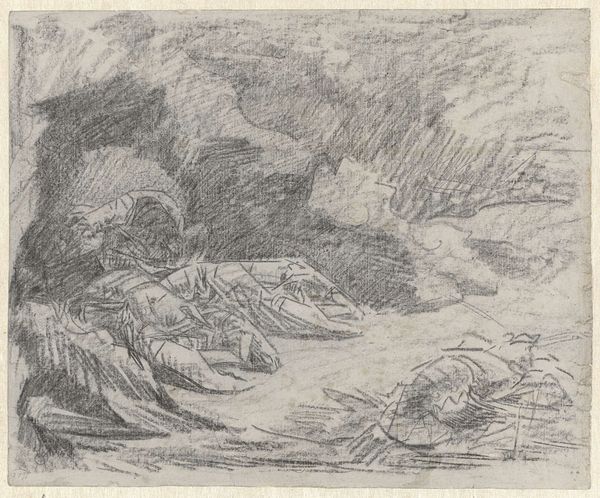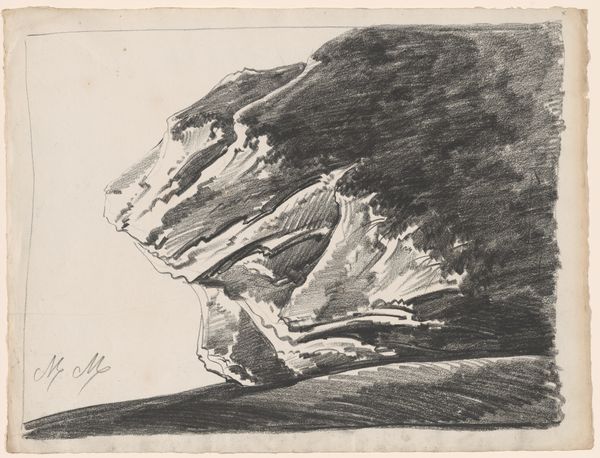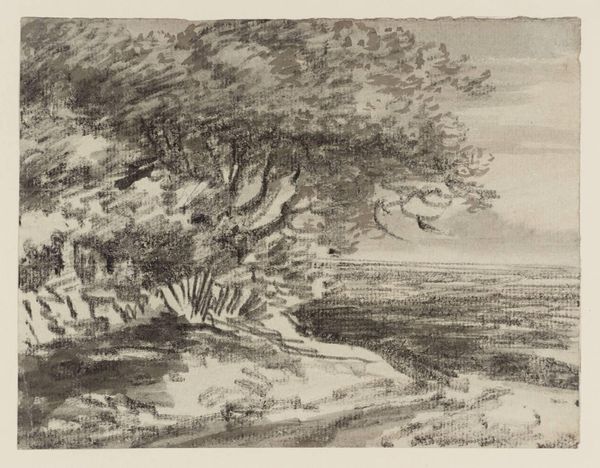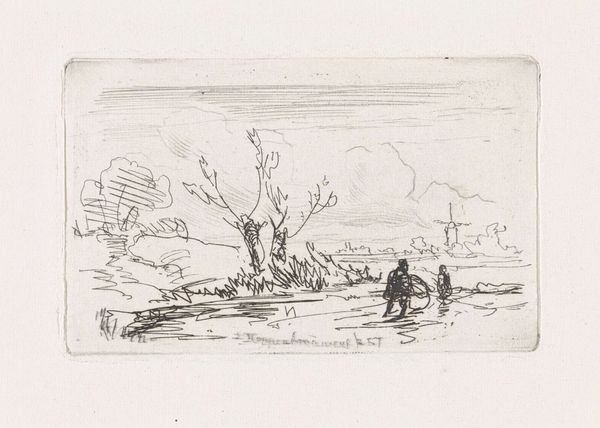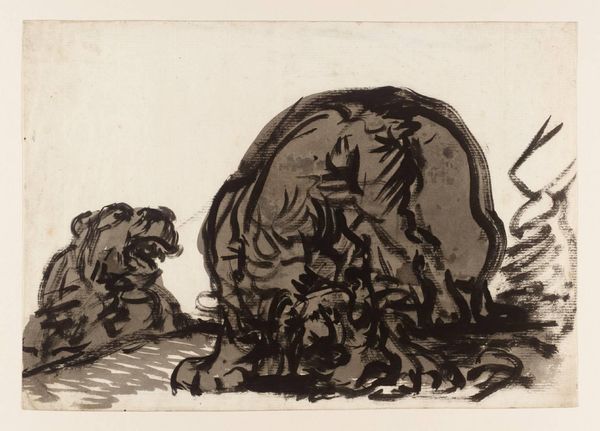
Dimensions: support: 103 x 140 mm
Copyright: CC-BY-NC-ND 4.0 DEED, Photo: Tate
Curator: Let's look at this intriguing work, A Rock in a Lake, by Alexander Cozens, held at the Tate. It's a small, intimate piece, using brown ink wash on paper. Editor: I love the feeling of quiet melancholy it evokes. It’s as if the rock is a lonely sentinel, isolated in its watery world. Curator: Cozens was quite interested in the picturesque, but also how landscapes could evoke particular emotions. His "blot" technique encouraged spontaneity. Editor: You can see that! There's a freedom in the brushstrokes, a sort of visual shorthand. It's the essence of the rock, not a photorealistic depiction. It feels very modern, actually. Curator: Absolutely. The work departs from traditional landscape painting by emphasizing the abstract qualities. This piece reflects the rise of the "sublime" in the late 18th century and a shift in the perception of nature. Editor: And yet, despite its simplicity, it's so evocative. The rock anchors us while the water hints at something deeper, something unknowable. Curator: Indeed, Cozens pushes landscape art toward abstraction, encouraging viewers to contemplate the emotional resonance of nature. Editor: It's a little gem. Small in scale but big in impact.
